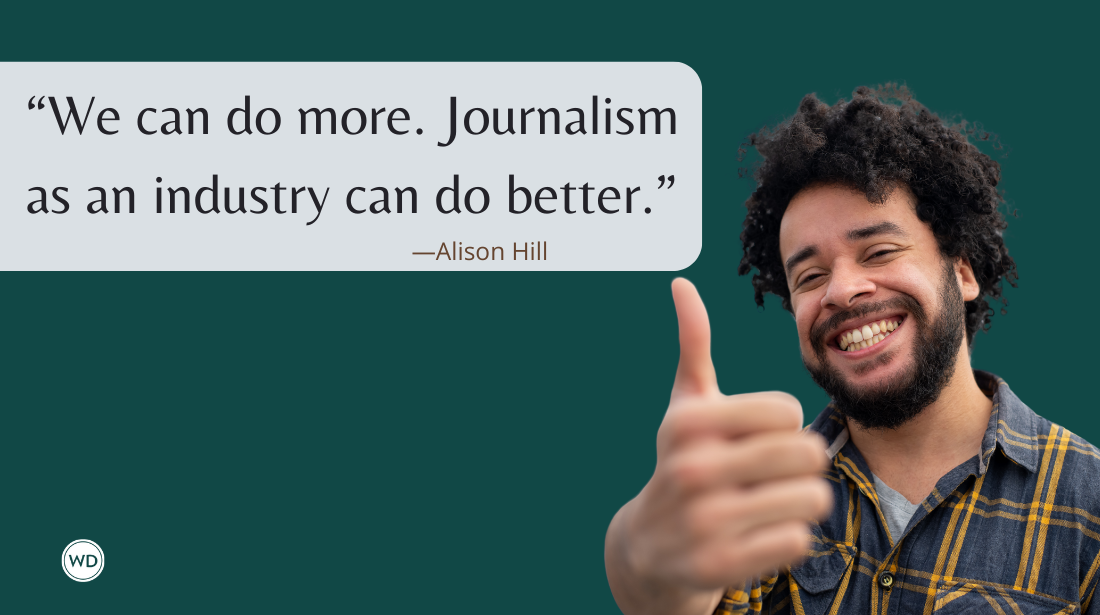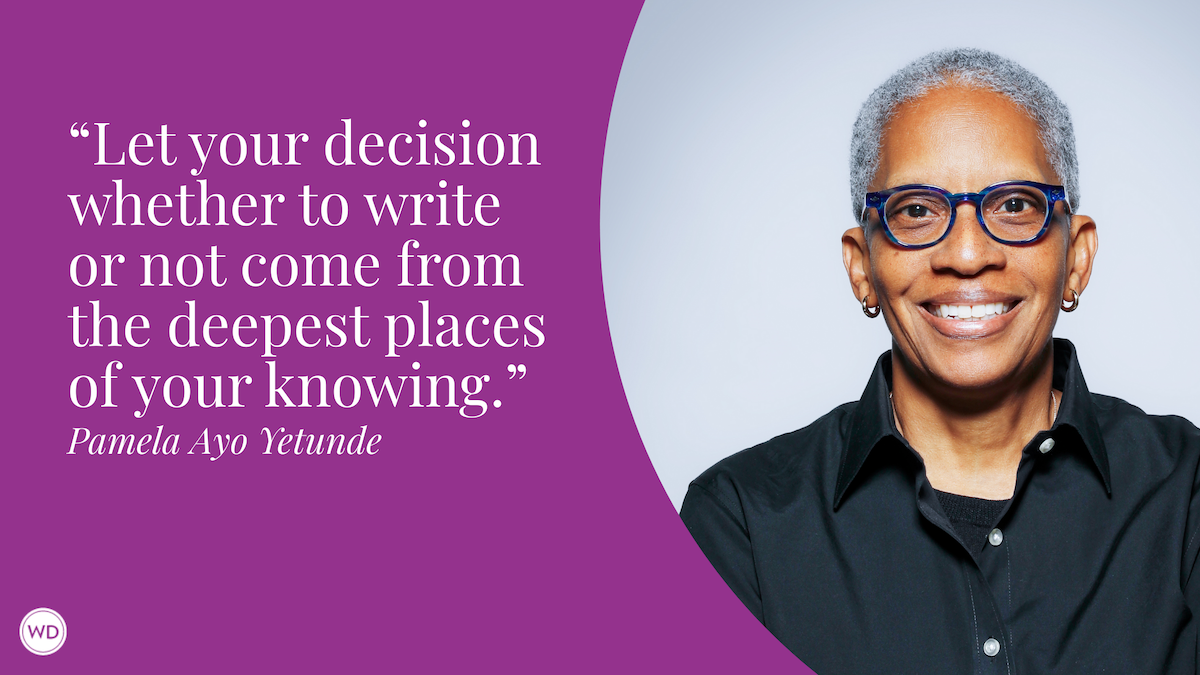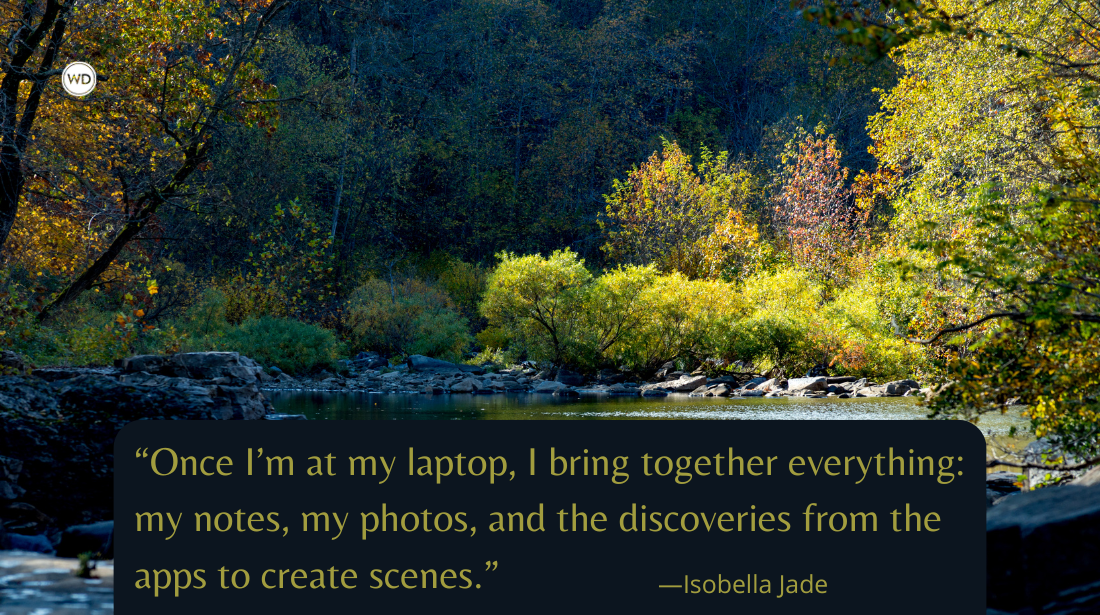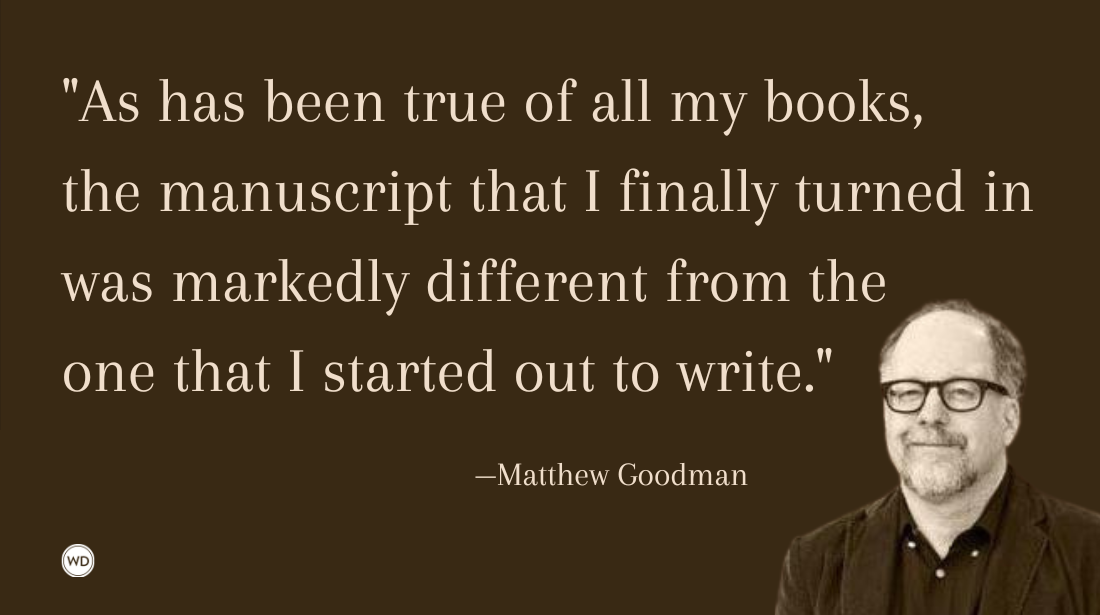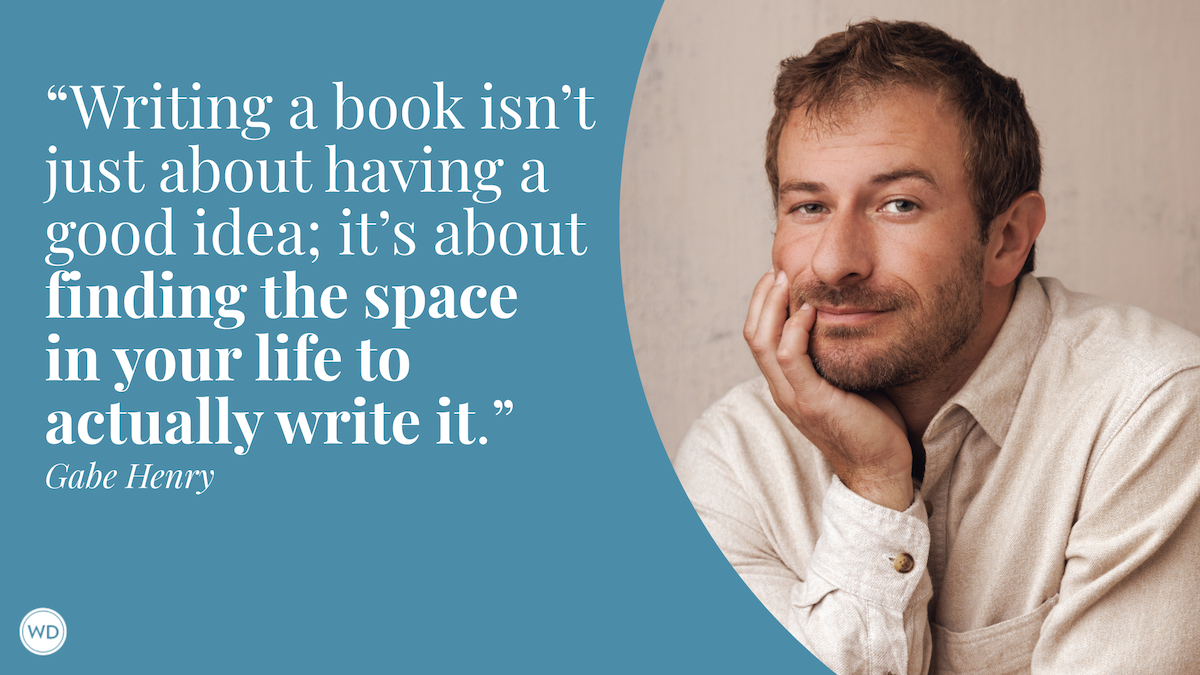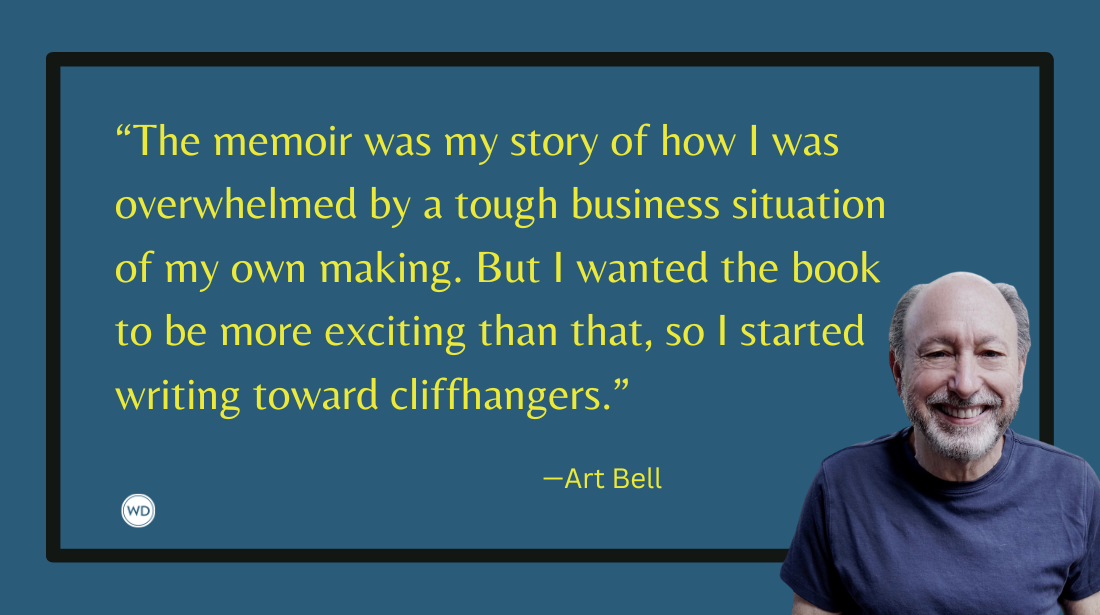Why Julia Cameron Plays By Her Own Writing Rules
Alcoholism. A turbulent Hollywood marriage. Writer’s Block. For the author of The Artist’s Way, the path of the writer has never been a walk in the park.
“It’s a sunny day. Cold, but sunny.”
Like in her books, Julia Cameron begins our interview with a description of the weather. To paraphrase agents and writing teachers galore, many quoted in this very magazine: Never start your story with a dream; never start with an alarm clock ringing; and never, under any circumstances, start with the weather.
She starts with the weather. And that’s OK.
Cameron, 63, has a history of going against convention: She first self-published her famous creativity guide The Artist’s Way, which became a bestseller; she has written more than 30 books spanning various genres, refusing to be pigeonholed into any one; she battled mental illness and alcoholism without letting her struggles define her; and, despite being one of the most lauded, read and respected writing and creativity self-help gurus, she’s occasionally haunted by self-doubt and burdened by writer’s block. And, she has her detractors—and isn’t entirely immune to their words. Especially bad is her own inner critic, who is so real to her, she’s named him Nigel.
Cameron’s latest book, The Creative Life: True Tales of Inspiration is a sort of eclectic diary geared toward artists of all kinds, documenting the ups and downs of a year in her working life, and her own adherence to the methods she popularized in 1992’s The Artist’s Way.
And, as always, Nigel hated it.
“He attacks each book specifically, personally,” she says. “So when he was attacking The Creative Life, he kept saying, ‘The sentences are too short and stubby, it’s too autobiographical, everyone’s going to hate you if you write this book.’ ”
But she wrote it anyway.
And this is perhaps one of the most important things about Julia Cameron: None of it stops her. It never has.
J&B on the rocks.
Scotch was Cameron’s early drink of choice. And the fact that she had a drink of choice at all was a tad surprising: She was from Libertyville, a suburb of Chicago, and drinking was taboo in her household, something done quietly by adults. But Cameron took naturally to alcohol when she was a freshman at Georgetown University. She’d always longed to be a bit of a literary femme fatale, and writing and drinking seemed to go hand in hand.
Scotch aside, there were other problems at Georgetown, the first of many she’d face in her journey to become a writer. Cameron had come in as an Italian major, but she wanted to switch to English—and when she consulted one of the people in charge, she didn’t exactly get the help she was looking for.
“Boys become writers,” she recalls being told. “Girls become wives.”
And then there was the time she tried to get on the school’s newspaper.
“I remember being asked, ‘Can you bake cookies?’ ” she says. “I sometimes think that my subsequent, uh, acclaim, if you will, is nothing but a vendetta at Georgetown: You’ll see. I’ll show you.”
So Cameron transferred to Fordham in New York City. She drank, heavily. She submitted and published her first pieces—poems—and eventually, she found herself back at Georgetown. She continued to drink. One particularly bad night, she had more than her fair share of Scotch and slit her wrist. Her father got her a therapist. Cameron told the therapist she wanted to be a writer.
“Don’t you think it might be more sensible to be a secretary?” he asked.
And so it went. Eventually, around 21, Cameron got word that her parents had suffered simultaneous breakdowns, and she had to step in and take care of her younger siblings. She went home to Libertyville, and there, posted at an Olympia typewriter on a regimen of cheddar cheese, apples and Scotch—“I don’t recommend this diet”—she worked on her first novel while assuming the role of caretaker.
“It was probably perfect,” she says. “Because if you’re trying to write and you have unlimited time, you can procrastinate an unlimited account, but if you have limited time, you rush to the page trying to get something down in the little bit of fragment of time that you have, and you may write a great deal that way.”
And so she did. On the recommendation of a friend, she got the subsequent novel into the hands of Emily Hahn at The New Yorker.
“Emily Hahn sent me back a little note and said, ‘Divide the number of flowers and sunsets by two and publish.’ And I thought she was being very critical, and I was extremely embarrassed and I thought, How could I not have realized I was a sentimental fool?”
Cameron now knows that Hahn was just being encouraging. But the self-doubt took over, the force of surly Nigel, and the novel found its way into a drawer, where it’s stayed.
Still, the girl who’d always longed for a literary life was about to get one. When her parents recovered, she went back to Washington, D.C., and got a call from The Washington Post. They wanted to know if she was interested in a job opening letters.
“When I went in, my editor said, ‘I hope you don’t think you’re a writer.’ And I said, ‘I hope you don’t think I’m a journalist.’ And, uh, turned out we were both right.”
The Post soon took notice.
The Post soon took notice of Cameron’s natural abilities, and she found herself writing features for the paper, then freelancing for Rolling Stone and, as things fell into place, many other outlets. With her well-received articles, her writing life was finally hitting its stride—despite the fact that she continued to drink, now downing booze with the likes of Hunter S. Thompson.
One day, she got what was to be a life-changing assignment from Playboy: Write about a young director named Martin Scorsese, who’s working on a movie called Taxi Driver.
She waited for him at the St. Regis Hotel in New York. She drank a double Scotch. He arrived late. Immediately, the two clicked. The interview went on for hours. He gave her the Taxi Driver script, and she suggested tweaks. It wasn’t long before they moved in together, and eventually, they got married during a snowstorm in front of the Christmas tree at Cameron’s parents’ house.
“It was wonderful,” she says. “It was a little bit like Christmas in Connecticut, sort of a Bing Crosby moment.”
But the moment soon ended. She moved to L.A. with Scorsese, made some famous friends, including Andy Warhol, and her drinking and burgeoning drug use intensified with the Hollywood circle. Her new associations didn’t help her career one bit—in fact, magazine editors began to tell Cameron they couldn’t hire her because it would be a conflict of interest. (“Rampant sexism,” she says. “They just believed that my husband would have too much sway over my literary opinions.”) One editor went so far as to tell Cameron that to get hired again, she’d have to get divorced.
So rather than being discouraged from writing entirely, Cameron shifted her focus and flexed her versatility by writing for Scorsese’s films. (Cameron and Scorsese also had a daughter, Domenica, who is now a filmmaker.) One of the movies the two collaborated on was New York, New York—which starred a young Liza Minnelli.
Cameron later found Minnelli’s clothes in Scorsese’s closet, and the marriage was over.
Still, she wrote. Things were unraveling, but Cameron says her literary friends’ faith in her writing kept it going. “It never occurred to me to stop,” she says. “I never wanted to be, quote, ‘just a wife.’ I wanted to be
a writer.”
She took her typewriter and her daughter and set up shop on Hollywood Boulevard. She returned to journalism, and continued to work on scripts, as well. Assignments began to roll in from those editors who’d promised them in the event of her divorce. Still, there was the drinking. Cameron deems her denial of her alcoholism “impeccable”—though, she notes, other people were well aware of the problem. She says Scorsese had likened her to the woman in The Razor’s Edge who dies of alcoholism—and he didn’t want it to be her.
Eventually, neither did Cameron. And so, in 1978, she finally quit.
“Of course the big question was, now that I’m sober, can I write?” she says. “And the answer was, fortunately, yes, you can. And I was told to try letting something write through me, rather than just my ego. Before that I had always had to have perfect prose. But after that I began to relax a little bit, and I found that when I did, my prose actually became better; it wasn’t so tricky.”
The business part of writing, though, wasn’t as easy; Cameron was becoming frustrated by the difficulties of getting her screenplays made. Moving away from her works-in-progress, she began a practice of simply starting each day by writing freely, producing what she called “morning pages.” They would later become a key element in her seminal book, The Artist’s Way—and Cameron’s fans would come to swear by them.
“I started writing morning pages just to keep my hand in, you know, just because I was a writer and I didn’t know what else to do but write,” she says. “And then one day as I was writing, a character came sort of strolling in and I realized, Oh my God, I don’t have to be just a screenwriter. I can write novels.”
Thus, she embarked upon a new path, practicing what she’d soon be preaching by the millions of copies.
After all, it was working for her.
Cameron didn’t submit the book anywhere.
Instead, she and a partner began photocopying pages, which they then three-hole punched and bound, and sold for $20.
Her teaching destiny had started simply and humbly enough: After she’d helped herself rediscover her creativity, someone sent a blocked writer her way. She helped him. Then, she helped a painter using the same techniques. Eventually, she started teaching classes, helping everyone from writers to filmmakers. Word spread. And people started asking her to write it down.
“It was sort of a love letter written to, I thought, about 10 people who were my friends, who were having trouble with blocks,” she says. But eventually, “We would get letters like, ‘I am from the State Department in Switzerland; we hear you have a book, and could I see it?’ And I would think, Oh, that poor bastard working for the State Department, we better send him a book.”
Since being picked up by Tarcher in 1992, that book, The Artist’s Way, has sold more than 2 million copies. The guide and its philosophy of using stream-of-conscious writing to unlock creativity have spawned innumerable groups and classes that practice its lessons, from New York to the jungle of Panama. People still come up to Cameron with books and the fruits of other creative labors made using her rediscover-your-artistic-potential-in-12-weeks technique.
All told, Cameron is not surprised that the small text she made in a basement proceeded to take on a life of its own—and she even quotes her version of the Field of Dreams maxim: “Build it, and they will come.”
“I was so focused on the fact that it was medicine,” she says. “That would be sort of like saying, ‘Penicillin took off as a vaccine because it was needed.’ And The Artist’s Way was needed.”
The book was so much of a hit, there’s no getting around the fact that today, when people think Julia Cameron, they think Artist’s Way—even though its publication was far from the end of what would become an expansive career. In addition to writing films (and even directing one), Cameron has created a body of work that includes books of poetry, more than 20 nonfiction books (ranging from other creativity guides to books of prayers), plays, novels, musicals and even an episode of “Miami Vice.”
She admits she does feel at times as if The Artist’s Way overshadows some of that other work—such as her novel Mozart’s Ghost, which, as she recalls in The Creative Life, was rejected more than 40 times before being published in 2008. “I think it was really good, and I think people tend to be surprised that I can actually do what I teach,” she says. “You wonder if the book wouldn’t have done better if it had been by an unknown author.”
Concerning all those rejections, Cameron says writers should never be discouraged by the odds, and that the important thing is to try.
“My work unblocks people and then I look at the work that they do and I think, My God, how could they not have known they were talented? How could they not have known?”
Maybe because of people like Nigel.
The Nigel who hated Cameron’s latest book, and the Nigel who likely has some choice words about most things she writes.
She recently moved to Santa Fe from New York, and is both teaching and working on a new book for Putnam, though she won’t reveal what it is—“If you talk about a book too much, you don’t write it.”
But naturally, Nigel has a few thoughts on it. “Nigel is so present,” she says with a laugh. “I wrote 40 pages that Nigel thought were terrible, then I moved here, and I went back to the 40 pages thinking I was going to find them terrible, and they were fine. You know, Nigel just has to get his licks in.”
And that’s another key element Cameron suggests in her various writings: Self-censors can be wrong. Just like Nigel was about The Creative Life. “He was convinced it was a bad book and a bad idea,” she says. “And yet when people have read the book they say, ‘Oh I loved this book, I read it in one gulp.’ ”
Overall, Nigel be damned, perhaps what makes Cameron’s work so strong is that she’s a living example of the very theories she espouses. Again, she may be a writing guru, but she’s also one of the rest of us: A person with a blank page, occasionally haunted by self-doubt, adversity, writer’s block, personal demons. And she continues to pursue the artist within her—regardless of how far it may drift.
“I have great respect for it, no matter what she puts out,” says Natalie Goldberg, Cameron’s longtime friend who rose to fame in writing circles with her own guides, Writing Down the Bones and Wild Mind. “And that’s what a writer needs to do: If she’s going through a hard time, a good time, she still writes.”
Cameron seems to just somehow make it all work. Like, on a much simpler level, starting her books with the weather. For which she has her reasons.
“I always start everything with the weather, because the weather is the first thing that I notice when I wake up in the morning,” she says. “And [now] I think I’ll probably write a lot about birds. My new house has a deck that wraps around my writing room; my writing room has many windows, and outside the windows I’ve hung bird feeders … for enticing different species. So I imagine I will be writing about that.”
And you know what? She’ll probably make it work, too.
No matter what Nigel says.
Zachary Petit is a freelance journalist and editor, and a lifelong literary and design nerd. He's also a former senior managing editor of Writer’s Digest magazine. Follow him on Twitter @ZacharyPetit.



